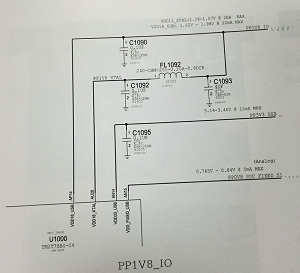The Test on Car Computer Performance - Anything You Need To Know
Modern car engine is controlled by computer. These computers are all equipped with a "chip" that tells you when and how your computer is tuned to your car, the fuel-to-air ratio, turbochargers, and many more. Because car manufacturers must be competitive in terms of fuel consumption and comply with emissions and other regulations, they usually perform well on these settings.
Purpose of the Performance Chip
Performance chips, sometimes called superchips, are aftermarket chips that adjust these parameters, often increasing engine power and torque. Some performance chip makers claim their chips will increase gasoline engine power by up to 35 horsepower and beyond, and even more in a turbocharged or diesel engine. These engines are often heavily constrained by the amount of boost the turbos are permitted to produce, or how much fuel gets injected. It's not uncommon for a performance tune to up gas turbocharged engine power by 50 to 75 horses, and diesels by 100 horsepower or more.
How Performance Chips Operate
Car computer chip contains something referred to a "lookup table." The lookup table contains data that tell the engine how to respond under various circumstances. For instance, if you are driving down the highway going 50 miles per hour and you quickly press the gas petal all the way to the floor, the computer will detect this and ask the chip what to do. The car engine chip will refer to its lookup table and tell the computer how much gas to send to your engine, how and when to shift an automatic car into a lower gear, how to adjust the timing and how much turbo boost to provide, if your car is equipped with a turbo charger. In a factory chip, all of these parameters are dictated by the car manufacturer for its own purposes. When you put a performance chip in, this changes the lookup table and adjusts the parameters to give you the most performance without regard to fuel economy, emissions and other performance-reducing constraints.
When a "Chip" Isn't
These days, most vehicles don't use removable "chips," as they did back in the 1980s and 1990s. Prior to the introduction of OBD-II in 1996, the use of removable "PROM" chips, which contained all of the computer's lookup tables and programming, was common. The original car PROM chips were single-use only, meaning that once they were programmed, they could never be erased and reprogrammed. The only way to change programming was to physically unplug the old chip and plug in a new one. Integrated re-programmable memory chips like those in your home computer have since replaced those. So, modern "power chips" are usually just mini computers that plug into your diagnostic port and hack the original software to change the parameters and lookup tables. Perhaps it's a case of nostalgia, but many still refer to these plug-in tuners as "chips."
Things to Consider
While car performance chip can increase performance, there are downsides. Installing a performance chip in your car will void your warranty. Also, you should expect a reduction in fuel economy and an increase in emissions. If your state tests for emissions, installing a performance chip could increase your car emissions enough that it causes you to fail state emissions testing. Also, car performance chips can sometimes increase the cost of your car insurance coverage. Additionally, if the new chip is not programmed properly, you could experience reduced engine life. However, the upsides are often significantly increased power and torque and increased engine response.
Tips: More information about phone repair guides and tools, you can ask help for Here.




Comments
Post a Comment